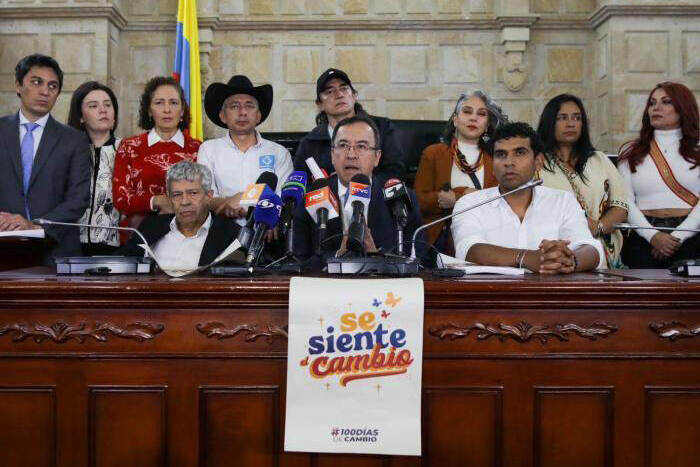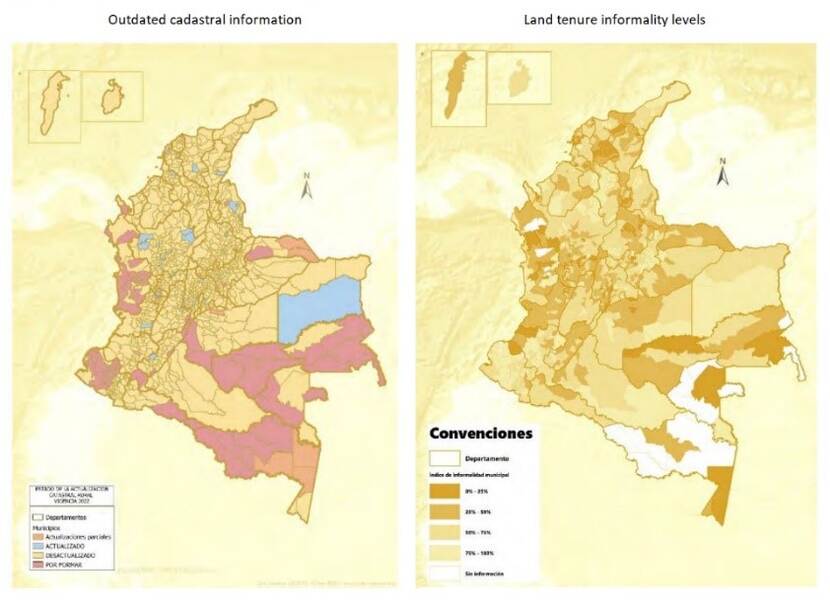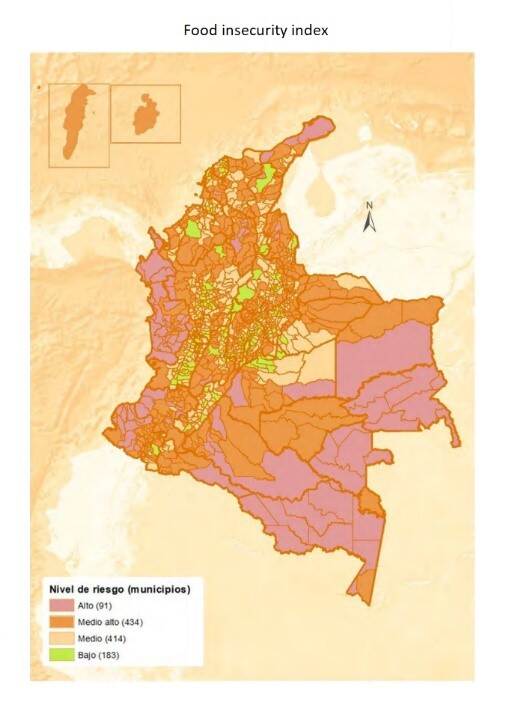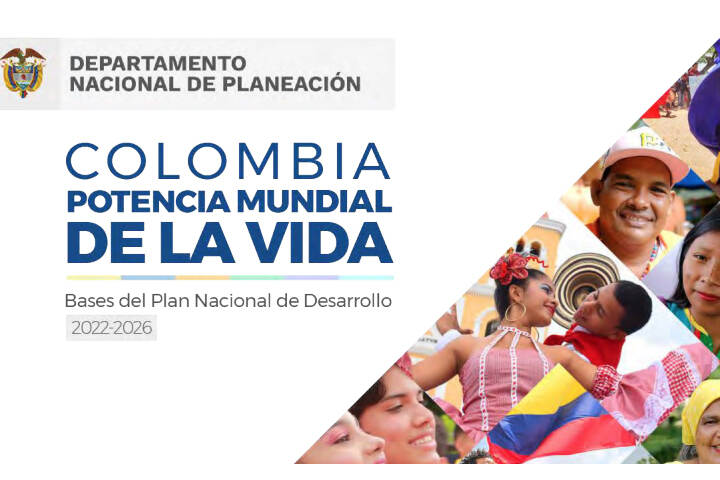Foundations for the upcoming Colombian National Development Plan presented. What to expect for the country’s rural development the next four years?
By mid-November the administration of President Gustavo Petro presented the first draft of the new National Development Plan (NDP) “Colombia, World Power of Life” [1], which was developed through an inclusive process encompassing various “binding regional dialogues”. The document, to be submitted to the Congress next February 7th, estimates public investments for the coming quadrennium, worth around EUR 206,7 billion, according to the governments’ foreseen macroeconomic and fiscal scenario. With regards to rural development, there are two “transformations” that picture the ambitions and proposals of this administration. This article analyses them: “Territorial organization around water and environmental justice”, and “Human right to nourishment”.

Spatial planning and organization with strong focus on improved land administration
The first “transformation” is “Territorial organization around water and environmental justice”. In this transformation, water is the central axis on which planning policies for the country’s development will be based. This aims at reducing environmental conflicts in the hydrographic basins, increasing nature and biodiversity’s protection, and improving tools for climate adaptation and resilience.
The document ranks the high levels of outdated cadastral information and land tenure informality on top of the country’s problems. On the one hand, so called catalyser (objective) 5 of this transformation is called “Consolidation of the Multipurpose Cadastre and transition to the Territory Administration System”. In this, the following goals are set: 1) Interoperable territorial information systems; 2) Multipurpose cadastre update fostering participatory methods; 3) Allocation of the most suitable lands for agricultural production; and, 4) Establishing the Territory Administration System. On the other hand, catalyser 6, “Formalised, adjudicated and regularised land tenure in rural, urban and suburban areas”, aims at speeding up the implementation of the Land Formalisation programme of the Peace Agreements. After five years of implementation, land tenure informality in the country remains above 50%.

These two catalysers offer a revitalised momentum for the bilateral collaboration on land administration between the Dutch and Colombian governments. Since the signing of the Peace Agreements with the FARC guerrilla, the Netherlands’ Kadaster has been working to promote a better coordination between the (many) agencies of the Colombian land administration system, the interoperability between the cadastre and the registry, and the implementation of a faster, cost-efficient and more participatory land administration system through the Fit for Purpose Methodology. More about this collaboration here: https://tierraenpaz.com/.
Human right to nourishment: the need to unlock the agricultural potential
The second transformation related to rural development is called “Human right to nourishment”. It acknowledges some of the major problems of the Colombian countryside that explain the disconnect between the country's potential to become an agricultural powerhouse and its coexistence with high levels of food and nutritional insecurity. These include a) Low productivity – which is 15% below the Latin American average; b) Inadequate road, air and/or river accessibility and connectivity; c) Low capacity in the management of sanitary and phytosanitary risks, due to the absence of an agricultural and livestock safety and traceability policy under the farm-to-table approach; d) Lack of coordination between national, regional and local entities; and, e) Unequal land property distribution. If you want to learn more about the bottlenecks and opportunities of Colombia’s agricultural and agrologistics sector, read the study carried out by Resilience BV: https://www.agroberichtenbuitenland.nl/landeninformatie/colombia/achtergrond/agrologistics-in-the-colombian-caribbean.

To overcome these challenges, while boosting agricultural productivity and moving towards sustainable food systems, the NDP presents the following 7 catalysers:
- Transformation of the agricultural sector to produce more and better food. This includes actions such as a) Organising agricultural production; b) Providing access to productive factors and services to promote agricultural productivity; c) Strengthening the National Agricultural Innovation System (SNIA) and developing “Territorial Innovation Systems” to foster knowledge and technology transfer to communities and build agricultural and agro-industrial value chains; d) Promoting (digital) technology adoption by small producers contributing to improved traceability of products; and e) Establishing a national industry of inputs and transition from inputs of chemical to biological origin. An example on how to achieve this is the “Intel4Value” initiative implemented by the Dutch NGO, Solidaridad Network, and supported by the Netherlands’ Government. More information available here: https://www.solidaridadnetwork.org/news/building-intelligent-palm-oil-value-chains-in-colombia/
- Efficient, digital and technical supply chains to boost the Colombian countryside. That will be achieved by a) The development of a national agrologistics plan; and, b) Promoting the adoption of emerging marketing and logistics technologies.
- Improved infrastructure network to guarantee efficient transport throughout the agricultural logistics chain and to reduce food loss and waste.
- Reduced intermediation and increased profitability in the marketing of agricultural production prioritising products with denominations of origin and other intellectual property instruments.
- Healthier and safer food to feed Colombia, wherein public health and animal and plant health are prioritised. For which a) the National food safety policy and food traceability system from farm to fork will be created; b) An education, communication and information strategy for proper food handling will be developed; and, c) The public health surveillance system and alert systems related to Foodborne Diseases and associated events will be improved. Opportunities upon which to build in this field are given by the collaboration on antimicrobial resistance between the Netherlands and Colombia (read more: https://projects.rvo.nl/project/nl-kvk-27378529-pst21co03/).
- Fight against hunger: consumption of adequate food and adapted to the Colombians’ needs. The following initiatives are proposed for this: a) Designing and implementing the ten-year plan for breastfeeding and complementary feeding; b) Incentivising healthy and adequate nourishing, implementing Food-Based Dietary Guidelines; c) Encouraging behaviour modification towards healthy eating and physical activity; d) Safeguarding and promoting food and traditional cuisines of Colombia, for which the “kitchens for peace” programme will be implemented; e) Response action to attend population with triple nutritional burden (malnutrition, micronutrient deficiency, and overweight); f) Supplying water suitable for human consumption throughout the national territory and updating the regulatory framework of the System for the Protection and Quality Control of Water for Human Consumption. Information about the Dutch contribution to end hunger in Colombia through the “Hosts for Peace” programme of the Dutch NGO ICCO/Conexión can be found here: https://www.agroberichtenbuitenland.nl/landeninformatie/colombia/achtergrond/host-for-peace-and-sabor-caribe-scholarships
- Multilevel governance for the human right to nourishment: Modern institutions and public policies, under the lead and coordination of the Ministry of Agriculture and Rural Development. As part of this, a Sectoral Strategic and Statistical Plan will be implemented, as the main statistical planning instrument.

If you want to learn more about these topics or our initiatives, contact us: BOG-LNV@minbuza.nl
Author: Andrés Santana